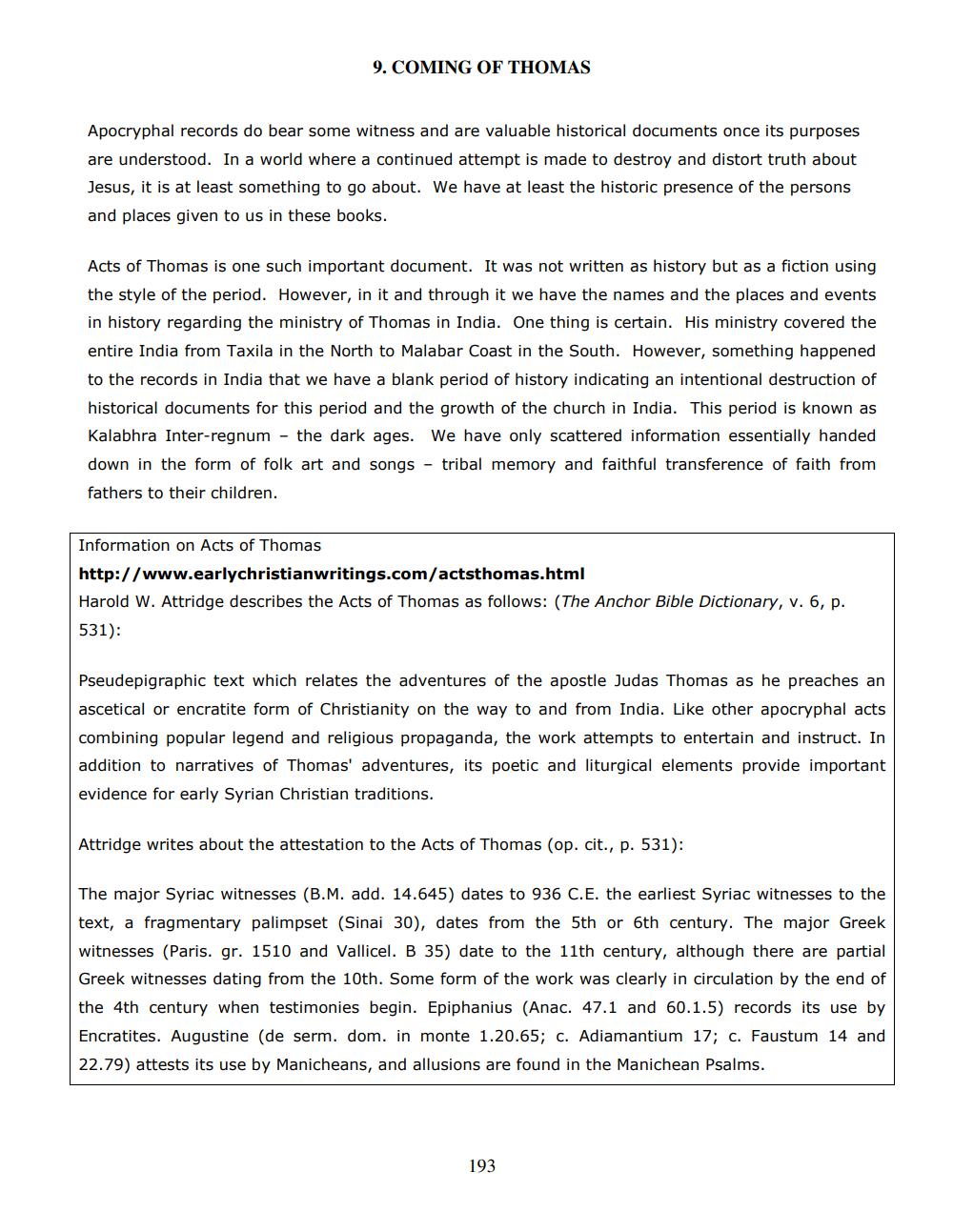________________
9. COMING OF THOMAS
Apocryphal records do bear some witness and are valuable historical documents once its purposes are understood. In a world where a continued attempt is made to destroy and distort truth about Jesus, it is at least something to go about. We have at least the historic presence of the persons and places given to us in these books.
Acts of Thomas is one such important document. It was not written as history but as a fiction using the style of the period. However, in it and through it we have the names and the places and events in history regarding the ministry of Thomas in India. One thing is certain. His ministry covered the entire India from Taxila in the North to Malabar Coast in the South. However, something happened to the records in India that we have a blank period of history indicating an intentional destruction of historical documents for this period and the growth of the church in India. This period is known as Kalabhra Inter-regnum - the dark ages. We have only scattered information essentially handed down in the form of folk art and songs - tribal memory and faithful transference of faith from fathers to their children.
Information on Acts of Thomas http://www.earlychristianwritings.com/actsthomas.html Harold W. Attridge describes the Acts of Thomas as follows: (The Anchor Bible Dictionary, v. 6, p. 531):
Pseudepigraphic text which relates the adventures of the apostle Judas Thomas as he preaches an ascetical or encratite form of Christianity on the way to and from India. Like other apocryphal acts combining popular legend and religious propaganda, the work attempts to entertain and instruct. In addition to narratives of Thomas' adventures, its poetic and liturgical elements provide important evidence for early Syrian Christian traditions.
Attridge writes about the attestation to the Acts of Thomas (op. cit., p. 531):
The major Syriac witnesses (B.M. add. 14.645) dates to 936 C.E. the earliest Syriac witnesses to the text, a fragmentary palimpset (Sinai 30), dates from the 5th or 6th century. The major Greek witnesses (Paris. gr. 1510 and Vallicel. B 35) date to the 11th century, although there are partial Greek witnesses dating from the 10th. Some form of the work was clearly in circulation by the end of the 4th century when testimonies begin. Epiphanius (Anac. 47.1 and 60.1.5) records its use by Encratites. Augustine (de serm. dom. in monte 1.20.65; C. Adiamantium 17; c. Faustum 14 and 22.79) attests its use by Manicheans, and allusions are found in the Manichean Psalms.
193




